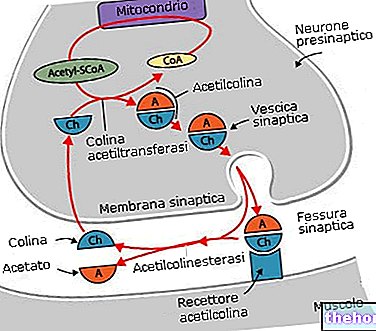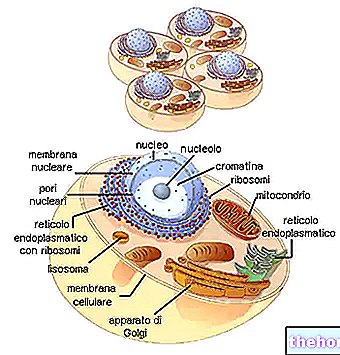Edited by Dr. Stefano Casali
The right ventricle is characterized by a triangular section, with a bellows movement divided into three stages:
Free ventricular wall shortening;
Displacement of the ventricular wall towards the interventricular septum (bellows drive);
Free ventricular wall dragging towards the interventr septum. by contraction of the left ventricle.
The left ventricle. it has a cylindrical cavity, with very developed oblique muscle bundles. The characteristic contraction of the transverse diameter, with a slight shortening of the longitudinal axis, gives the configuration of a high pressure pump, capable of pushing small quantities of blood into a high pressure circulation. The structure is such as to speak of Volume pump for the right ventricle, designed to push large quantities of blood into the pulmonary circulation, characterized by low resistance. Pressure Pump on the other hand, for the left ventricle, capable of determining the introduction of moderate quantities of blood into the systemic circulation, characterized instead by strong resistance.
Cardiac cycle (0.9 sec.)
The cardiac cycle consists of various phases among which systole and diastole indicate contraction and relaxation, respectively. The stages are:
1) Ventricular isovolumic contraction (preload): the contraction of the muscle bundles causes an increase in intraventricular pressure such as to lead to the closure of the mitral valve, and subsequently an increase in intra-atrial pressure.The cavity therefore appears as a closed chamber since the two valves are closed; this involves an increase in pressure, at first slow and then rapid, without shortening the fibers. This phase ends at a pressure of 80 mmHg.
2) Outflow phase: compared to the pressure of the aorta, the aortic valve opens, resulting in the emptying of the ventricle, divided into two phases. Rapid outflow up to a peak of 125 mmHg, followed by a slow outflow which stops at a P of 100 mmHg. These two phases are obviously marked by a shortening of the muscle bundles. The second phase (called protodiastole) is instead determined by the decrease in pressure gradient between ventricle and aortic bulb (highly elastic structure) with intraventricular pressure drop, and by the gradual inactivation of the muscle bundles which were activated first. The end of this phase coincides with the end of the systole and with the incisura, ie the closure of the aortic valve.
3) Isometric release: there is a further pressure drop down to 0, with 40% of the diastolic blood still contained inside.

4) Rapid diastolic ventricular filling: following the pressure drop of the isometric relaxation, the mitral valve opens, letting a column of blood pass towards the released ventricle, without yet comparing the gradient difference. However, only one third of the blood passed is due to presystole, the remainder in fact passes through a pressure gradient dictated by the ventricular diastole.
5) Slow diastolic ventricular filling or diastasis: it is the phase in which the pressure gradients are equal, therefore following the systole, closure of the mitral valve and resumption of the cardiac cycle.
The only difference that is observed in the right ventricle concerns, in addition to the clearly lower pressure values, the outflow trend, where instead of observing a peak, there is a plateau. This event is attributable to the low resistance of the pulmonary circulation .
Heart sounds.
Tones are noises produced by the heart following movement or stopping of the blood. There are 4, only the first two are audible.
1st TONE: it marks the beginning of the ventricular systole and decreases during the outflow phase. It is heard well in the apical region of the heart. to the turbulent flow of blood passing to the aortic bulb.
2nd TONE: coincides with the incisura, is shorter than the first, and is determined by the closure of the aortic and pulmonary valves. It can be heard on the left and right of the sternum in the 2nd intercostal space.
3rd TONE: of very short duration, it is given by the collision of the blood towards the interventricular wall during the rapid ventricular filling phase.
4th TONE: it begins in the middle of the presystole, and is determined by the vibrations of the blood and the heart apparatus.
Other articles on "Cardiac Mechanics"
- Nervous control of the heart
- Cardiovascular system receptors
- Vasal Cardiac System

.jpg)


























